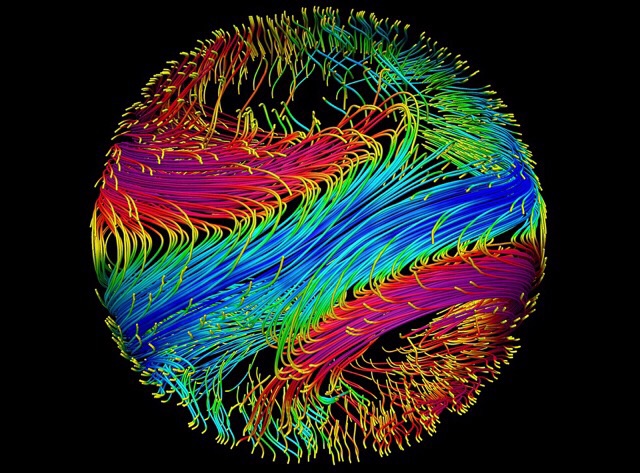Simulating the interior dynamics of stars and giant exoplanets

In the two decades since the first exoplanets were found in the mid-1990s, astronomers have discovered nearly 2,000 planets outside our solar system. Many of these are known as "hot Jupiters," planets that are similar in size to Jupiter but are much closer to their host stars, and therefore have faster orbits and much hotter surface temperatures.
To learn more about the interior dynamics of hot Jupiter exoplanets and their stars, astrophysicist Tamara Rogers and her team at the University of Arizona's Lunar and Planetary Laboratory ran a series of groundbreaking simulations on the Pleiades supercomputer, located at the NASA Advanced Supercomputing (NAS) facility at Ames Research Center.
"Modeling and simulation on high-performance computers are very effective tools for researching the dynamical processes that occur within stars and planets," said Rogers, now a lecturer at Newcastle University in the U.K. "Understanding these phenomena can help us learn how hot Jupiters formed and how they affect the evolution of planetary systems."
The team's simulations of hot Jupiters—which were the first to include magnetic fields—along with their massive star simulations, can help astronomers interpret data collected from space-based observatories like NASA's Kepler, Spitzer, and Hubble telescopes. For example, the team's findings may help explain some puzzling observations, such as why planets circling cool stars tend to have orbits that align with the star's spin direction while those around hot stars often have misaligned orbits; and why many hot Jupiters are bigger and less dense than expected given their mass, even accounting for their extreme temperatures. The simulation results also reveal how magnetic effects can influence winds on these planets, a finding that could provide a method for estimating the planets' magnetic fields based on observations of their atmospheres.
By studying hot Jupiters, so different from the gas giants that slowly circle our own Sun, astronomers are expanding their knowledge of planetary structure and evolution—research that is crucial to the search for rocky, Earth-like exoplanets that may support life.
